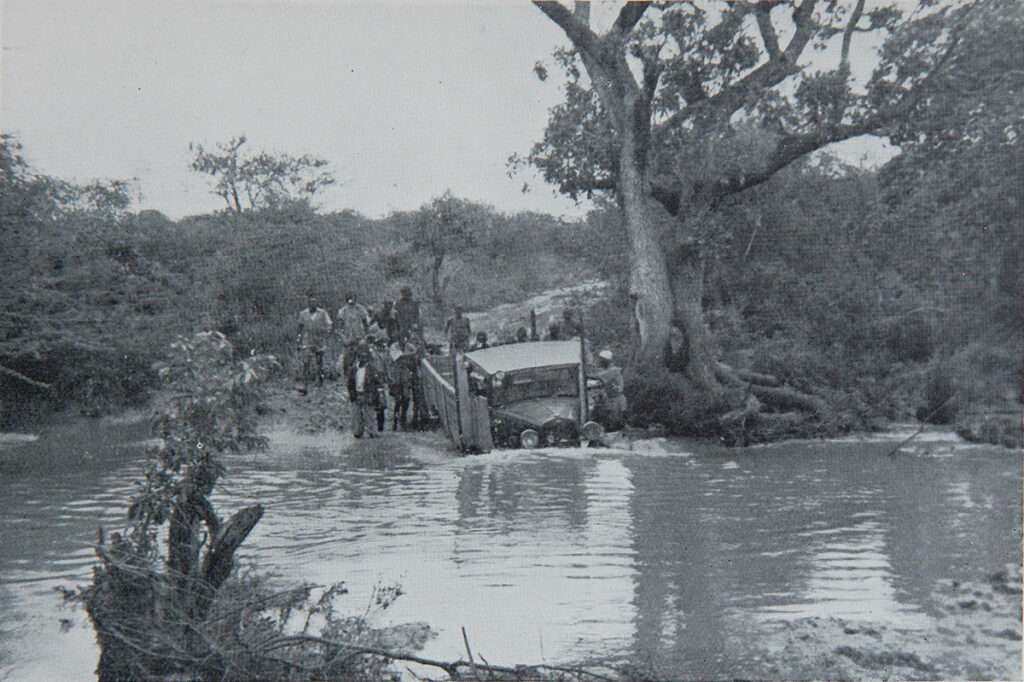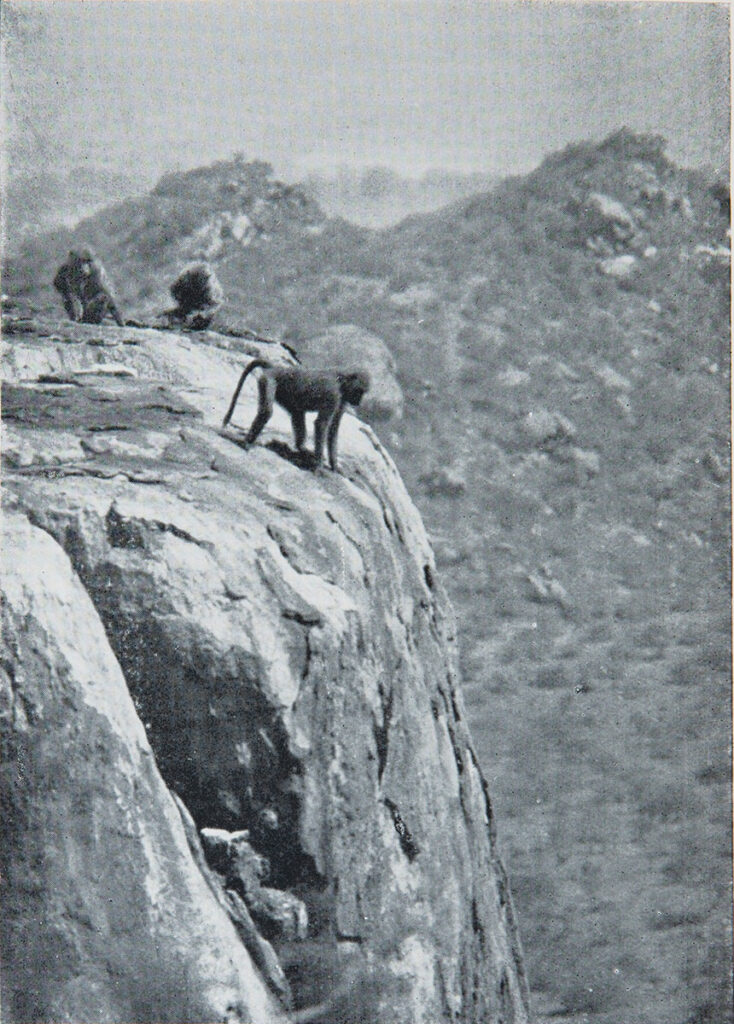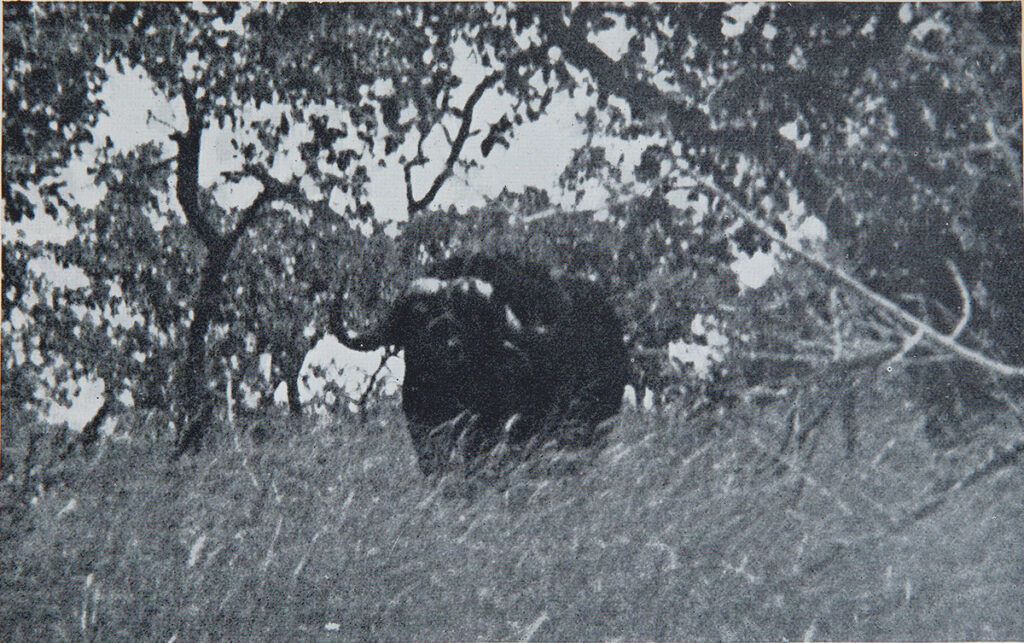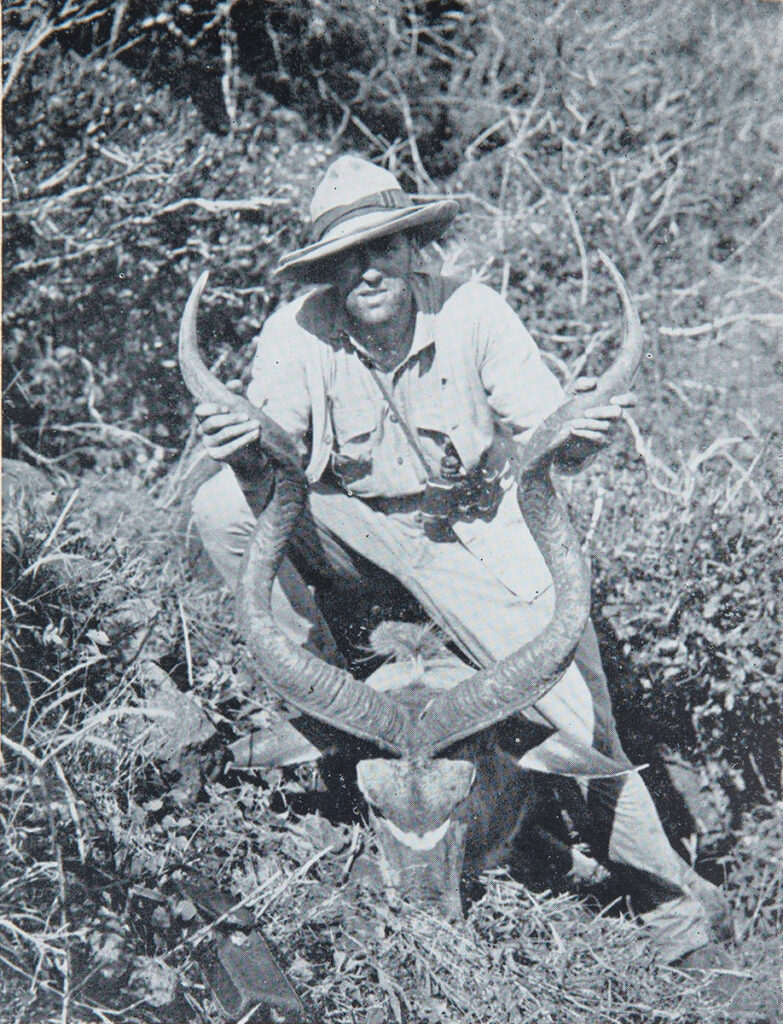Armchair Safari – An Alpine Safari For Greater Kudu In Kenya’s Mountains
About noon on Dec 20, 1933, two rickety lorries were sitting quietly in the mud at the end of “the road” at the bottom of Mount Kenya. The vehicles had set out on a long trip, heading north towards Lake Rudolph about 500 miles away. Their goal was the 9,000 feet Mount Khulal which rises at the southern corner of the lake. But if they were to continue as they had been, it would take a year to reach the lake. Since morning the rain had been lashing the vehicle and they were sitting up to the axles in exactly the same, black, bottomless puddle. In three days they had covered exactly 100 miles. I could have got that far on foot. For the moment there was nothing but rain and not a sign of clearing.
It was getting dark but the rain paid no attention. We could not leave the lorries. We could not set up a tent in such a downpour. I could not uproot my shivering, half-naked boys, crowded in behind me on top of the lorry, between the luggage and rainproof tarpaulin. Twelve of them kept each other warm. To cut a long story short, we “slept” that way and when dawn came, the rain had stopped but grey mist still hung uniformly around us. We could hardly make out the road. The ruts had turned to parallel streams.

Exhausted we set to freeing the lorries, digging out the wheels one by one and filling in the abyss below with stones, logs and bundled weeds. Eventually we succeeded in shifting it, and with the help of rope, dragged ourselves forward 200 yards and then went on. The natives call that motoring. The day after, we had relative good luck. When we got stuck we could use one lorry to haul out the other and then used the other lorry to haul out the first one. If both got stuck we returned to the digging process. The rain stopped and started and showed no mercy on the bemired hunters.
The next day a sort of miracle happened. The sun came out. This was the end of the rain. The sun even tore down the mist at the top of Mount Kenya so we could see her white 20,000 foot summit. This, however, did not make much difference to the condition of the roads. But, at any rate, it did not get much worse. By evening, the sun had dried up the ground enough so that we were trundling along at quite a good speed and by dusk were setting up camp at the base of the Northern Guaso-Nyiro River.
At the sight of the river we had a surprise: it had swollen from is 20-feet wide character to a broad, tearing, evilly-roaring flood. The torrents wrenched out trees from the banks as it foamed and tossed through a narrow bed. We could not cross until the next day when hopefully the level would have dropped. Nevertheless it was good to spend an evening beneath a clear and starry sky and to be able to dry our clothes near the campfire. Alas, the mosquitoes quickly drove us into our tents or under our nets where we listened to the swollen river and the occasional rumbling of a couple of hunting lions.
By dawn the river had fallen, and we crossed without any major incident, lorries, mules and all and then filled our jugs with coffee colored river water and set out across the worst stage of the journey – the waterless and trackless Khaisut desert.
It was easy enough in the beginning. Two stone lines run straight into the unknown, like a railway line, and between them is “the road.” But after half a day they stop. Civilization has made no progress beyond this point. It was like going from a canal into the open sea where landmarks are no more and only a compass can help. With its help, we marched for three days before happily emerging from the edge of the desert. Soon we saw, in the distance, a camel caravan with men from the Boran tribe. After much gesticulation, we got them to stop and negotiate with us. I know they never saw a vehicle and doubt some had ever seen a white man. But then they planted their spears in the ground (that is how the savage proclaims his friendly intentions) and held their hands out to us. They came forward in their long springy strides, their teeth flashing a welcoming grin and ostrich feathers sticking in their hair.

They spoke one at a time, never interrupted each other and pointed generally in the direction of Khulal Mountain, where we would find more Borana tribesmen who could help transport our gear up the mountain. We exchanged tobacco for some milk (it was awful) and then set up camp. We set up camp and the next day achieved our destination. It had taken 10 days to go 500 miles, hardly a dizzying rate of progress. There we met more Borana and reached an agreement for them up help us up the mountain with our gear.
There are such things as good camels, but they are not found among the Borana. The Borana camel is a pig-headed, bad tempered, snapping beast who regards having a load on its back as a personal insult. So – they would not get up after their loads were tied. One native even tried biting a camel’s tail but that only got him a sideways kick. The camel became the hero of this incident and the other camels grinned maliciously.
In the end we unloaded them and then got them down, loaded a bit, got them up, loaded a bit more, got them up and so on. In that manner they did not know when they had been fully loaded. FINALLY, in single file we stared off. It was a weary climb. The camels stopped every half hour. Sometimes the one in front went down and every camel followed. Other times they looked back to see if the one in the rear would like down and they could also stop. Eventually we came close to our destination, unloaded, happily got rid of the camels and mounted our sturdy little riding mules. We reached the top but our gear was still down below.
On top a positively numbing wind was blowing. We looked down steep slopes reminiscent of North American mountains and canyons. In the distance was the far-reaching, silver mirror-surface of Lake Rudolph. It was amazing. Forty-five years earlier Count Teleki spent a year getting here on foot. We had just taken 10 days. In the future I imagine hunters will arrive after a morning flight. And I hope that the Boran camel will not exist outside a museum. Our night was wet and very cold. But we were finally in the home of the Greater Kudu.
In all of Kenya, the greater kudu is found only in this area. In spite of a new bout of rain, we mounted the mules and went out to look around. The vegetation is bright green, alpine pastures with dark unpenetrated jungles. Everything is a wanton confusion of luxuriance with trees (torn, gnarled, and veterans of many storms) clothed in moss. I wondered whether the moss protected the tree or sucked its blood.
By noon we came upon our first herd of kudu lying on a steep slope by a big white rock. Nothing worth shooting. And, they were separated from us by a wide, narrow gorge. Soon after spotting them the clouds came in and hid them from view. We could see nothing more in that direction. Some-time after sunset, soaked through and chilled to the bone, we caught sight of the glow-worm like glimmer of our campfire at the bottom of a sheltered gully. That shabby tent, the camp fire, and a cup of soup are supreme luxury for a tired hunter. An ideal home in that unending wilderness.
The next day, we awoke to a freezing cold but clear dawn. And when the sun rose, we were already on the mountain top with field glasses. After a long time searching we found a large, lonely, kudu bull with a fine head. Only, he was standing at the top of the farthest peak from us, at least a mile away as the crow flies. After scarcely more than a minute we set off and plunged into the forest and set off for the peak which was the retreat of the kudu. We could have sworn that there were only two peaks between us, but actually there were four. I am no hiker, so I did not receive the news of having to scramble up and down the third and fourth peaks with any enthusiasm. I did not yodel with glee. I swore I would not climb another hill. But an oath under such circumstances should not considered as binding.
We had been following the trail for perhaps 30 minutes when the tracker in front of me froze. He stood on one leg, and the other stopped where it was, in mid-air, like a pointing dog. In the depths of the jungle, a cow was looking at us and we dare not move in case a bull was behind her. We looked at each other for several minutes. Then, from the side, another sound. We saw the big, black head of a buffalo bull!

I would have liked to shoot him. But I was prepared only for kudu with a smaller rifle that would not be much good for buffalo. My heavy gun was with one of the men at the rear. I signaled for it with one finger but by the time it arrived, it was too late. When the coast was clear the kudu cow remained. Then the wind gave us away. And my mind reminded me that there were FOUR mountains between us and home. So ended that hunting day.
The next day found us searching the peaks again. Again the glasses picked up a large kudu, also on a steep, craggy slope, also far away. There was no forest anywhere near him but he was close to a lake. After an alpine effort only slightly less exhausting than that of the day before, we reached the place from which the kudu had been gazing at Lake Rudolph but did not even find his tracks. Four hours there, four hours back? But as we had come so far already we decided to look at the other side of the mountain.
And when, after long scrambling from rock to rock, I looked out from behind a big silver-grey boulder, there stood the kudu bull before me. Not eighty yards away. I had no time to enjoy the situation. For we saw each other practically at the same time. Back went his head, his long twisted horns flat on his back and he streaked for the valley. My sight of him, his first few leaps and the crash of my rifles all happened in a matter of seconds. At my shot the bull jumped and then rushed on for a little, turned a somersault, and crashed down into the gorge with such tremendous velocity that my hair stood on end. I hoped he would not smash those horns.
With my heart in my mouth I clambered down towards him. When I saw where he was lying I stopped to glass. Mercifully the horns were all right. It was a miracle. On the way home I positively turned hiker. I climbed those awful mountains whistling cheerfully. All the encouragement I needed was the kudu head carried by the bearer in front of me, my splendid trophy of the king of antelopes. However, there was to be another surprise in store for me.
We had wasted a good deal of time taking pictures, cutting off the head and so forth so we were still far from camp when darkness fell. Luckily the moon was on our side (my trackers had never been in this country before). It must have been about eight p.m. when we just coming out of the darkness of the forest into a moonlit clearing, when we heard a deep grunt and a solitary bull buffalo leapt before us. He moved on, turned around and looked back at us. He was angry but he didn’t move. I sat down and took aim, though I could not really see my foresight. I could make out the black form of the buffalo but darkness completely swallowed up the end of my rife. Then recklessness seized me, my finger crooked and I fired. The bullet smacked right into the buffalo and after a short run he went down. That was pure luck. To shoot blindly like that is reckless but this time. By chance, it succeeded.

I did not want to make us any later by waiting to cut off the buffalo’s head. It was almost ten p.m. when I sat down by the camp fire for dinner. The kudu head hung from the branch of a tree while the flickering light of the camp fire played on it. Our only bottle of champagne was opened in celebration. The next morning, in another pouring rain, I returned for the buffalo head. But the hyenas had made a thorough mess of it so I took only the horns. When I returned to camp all my belongings were already on the camels’ backs, this time with not a word of protest. Their servitude was over.– Selected and edited by Ellen Enzler-Herring

